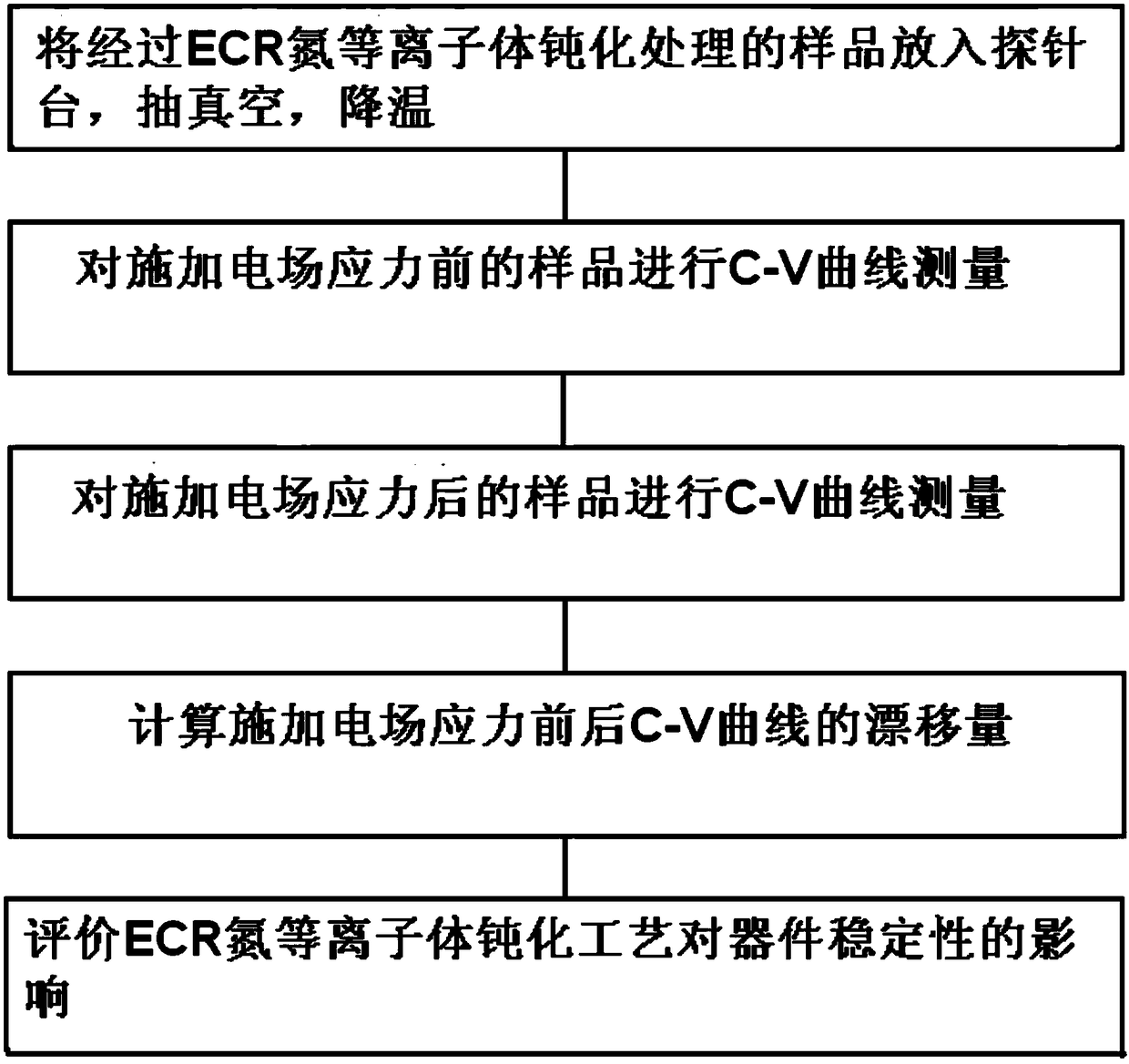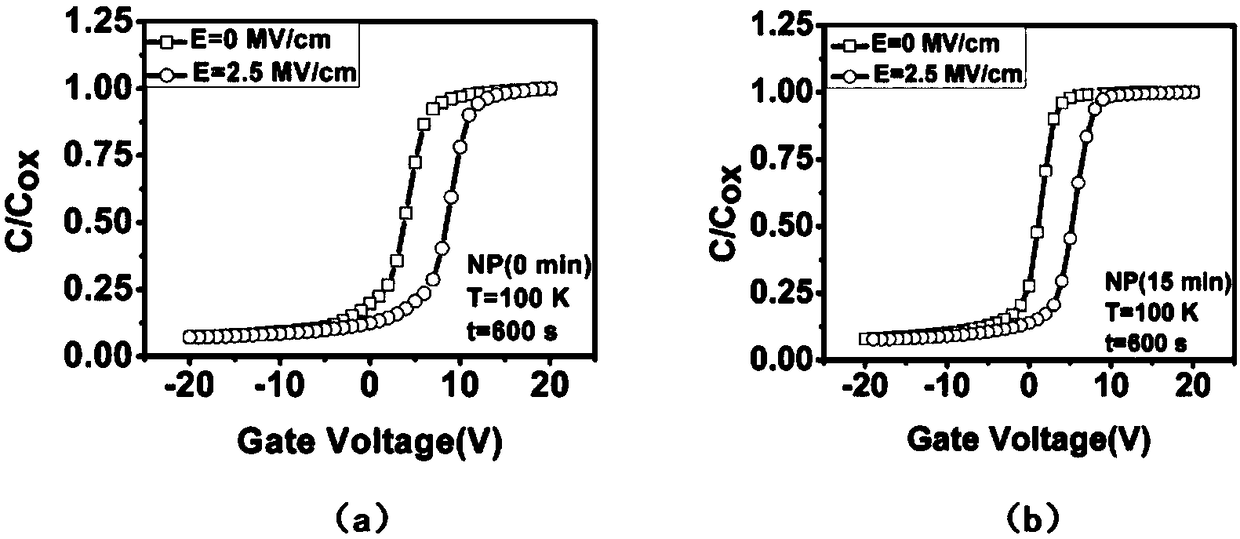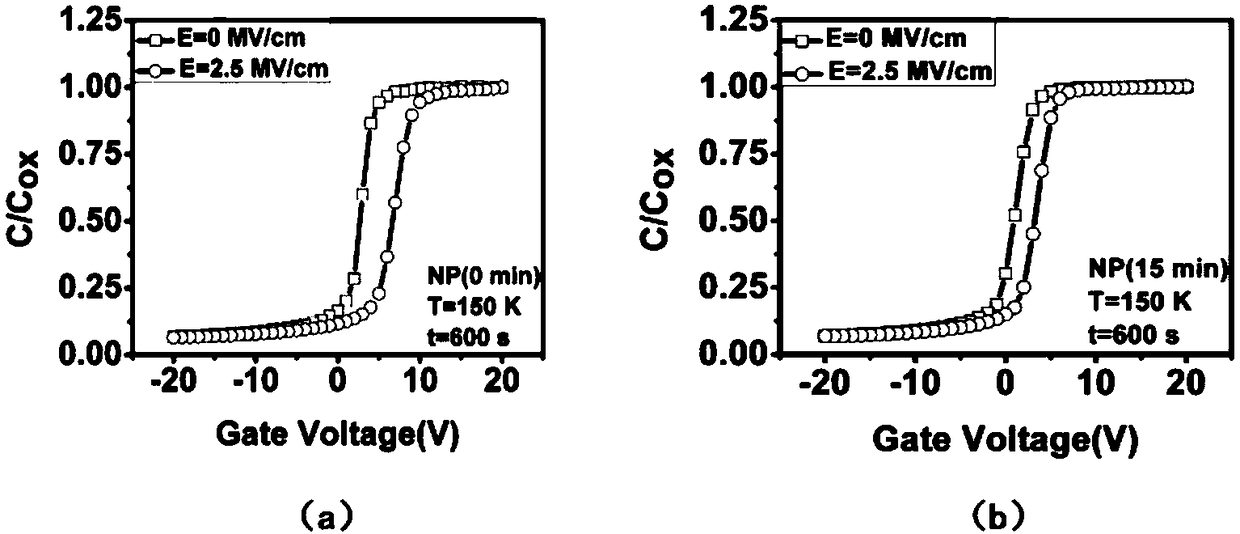SiC MOSFET device low-temperature stability evaluation test method
A test method and stability technology, applied in the field of reliability testing of silicon carbide semiconductor devices, can solve the problem of not specifying the test method for evaluating the stability of the device, etc.
- Summary
- Abstract
- Description
- Claims
- Application Information
AI Technical Summary
Problems solved by technology
Method used
Image
Examples
Embodiment 1
[0031] Introduce nitrogen gas into the chamber of the probe station, open the chamber after 5 minutes and put in MOSFET samples made of 2 silicon carbide wafers that have been processed by ECR nitrogen plasma passivation for 0min and 15min, close the chamber, and close the chamber. Nitrogen cylinder; turn on the mechanical pump to evacuate until it reaches 10 -4When Pa is below, turn off the chamber knob, turn off the mechanical pump, and use liquid nitrogen to lower the chamber to a low temperature of 100K; at a low temperature test temperature of 100K, use the 4200-SCS semiconductor parameter tester to measure high-frequency C-V curves and semiconductor parameters. The instrument frequency is set to 1MHz, and the scanning voltage is -20V to 20V; after measuring the high-frequency C-V curve at 100K, a positive electric field stress of 2.5MV / cm is applied in situ for 600s, and the C-V curve is measured again immediately after the positive electric field stress ends ; Calculate...
Embodiment 2
[0036] Introduce nitrogen gas into the chamber of the probe station, open the chamber after 5 minutes and put in MOSFET samples made of 2 silicon carbide wafers that have been processed by ECR nitrogen plasma passivation for 0min and 15min, close the chamber, and close the chamber. Nitrogen cylinder; turn on the mechanical pump to evacuate until it reaches 10 -4 When Pa is below, close the chamber knob, turn off the mechanical pump, and use liquid nitrogen to lower the chamber to a low temperature of 150K; at a low temperature test temperature of 150K, use a 4200-SCS semiconductor parameter tester for high-frequency C-V curve measurement, semiconductor parameter tester The frequency is set to 1MHz, and the scanning voltage is -20V to 20V; after measuring the high-frequency C-V curve at 150K, a positive electric field stress of 2.5MV / cm is applied in situ for 600s, and the C-V curve is measured again immediately after the stress is over; The drift of the C-V curve before and af...
Embodiment 3
[0041] Introduce nitrogen gas into the chamber of the probe station, open the chamber after 5 minutes and put in MOSFET samples made of 2 silicon carbide wafers that have been processed by ECR nitrogen plasma passivation for 0min and 15min, close the chamber, and close the chamber. Nitrogen cylinder; turn on the mechanical pump to evacuate until it reaches 10 -4 When Pa is below, close the chamber knob, turn off the mechanical pump, and use liquid nitrogen to lower the chamber to a low temperature of 200K; at a low temperature test temperature of 200K, use a 4200-SCS semiconductor parameter tester for high-frequency C-V curve measurement, semiconductor parameter tester The frequency is set to 1MHz, and the scanning voltage is -20V to 20V; after measuring the high-frequency C-V curve at 200K, a positive electric field stress of 2.5MV / cm is applied in situ for 600s, and the C-V curve is measured again immediately after the positive electric field stress ends; Calculate the ΔV by...
PUM
 Login to View More
Login to View More Abstract
Description
Claims
Application Information
 Login to View More
Login to View More - R&D
- Intellectual Property
- Life Sciences
- Materials
- Tech Scout
- Unparalleled Data Quality
- Higher Quality Content
- 60% Fewer Hallucinations
Browse by: Latest US Patents, China's latest patents, Technical Efficacy Thesaurus, Application Domain, Technology Topic, Popular Technical Reports.
© 2025 PatSnap. All rights reserved.Legal|Privacy policy|Modern Slavery Act Transparency Statement|Sitemap|About US| Contact US: help@patsnap.com



